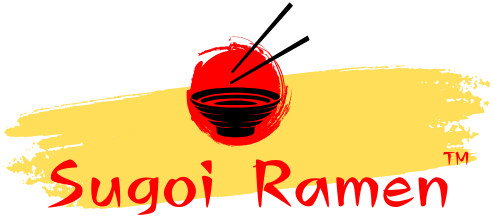In recent years, vegetarian ramen has gained immense popularity as a flavorful and healthy alternative to traditional ramen. With a myriad of fresh vegetables, aromatic spices, and innovative toppings, vegetarian ramen offers a symphony of flavors and textures that can satisfy even the most discerning palate. This guide delves deep into vegetarian ramen ingredients, providing you with all the essentials needed to craft a delicious bowl at home.
Understanding the Basics of Vegetarian Ramen

At its core, vegetarian ramen relies on the harmonious combination of broth, noodles, and toppings. By carefully selecting vegetarian ramen ingredients, you can create a dish that’s both wholesome and indulgent. Below, we explore the essential components and how to optimize each for maximum flavor.
The Foundation: Vegetarian Ramen Broth
A rich and flavorful broth is the soul of any ramen dish. In vegetarian ramen, the broth is crafted using plant-based ingredients that offer depth and umami.
Key Ingredients for Vegetarian Broth
- Kombu (Seaweed): A cornerstone of Japanese cuisine, kombu imparts a deep umami flavor.
- Dried Shiitake Mushrooms: These mushrooms add a rich, earthy taste to the broth.
- Miso Paste: Fermented soybean paste enhances the flavor with its salty, tangy profile.
- Soy Sauce: A splash of soy sauce brings a savory balance to the broth.
- Vegetables: Carrots, onions, garlic, and ginger are simmered to infuse the broth with sweetness and aroma.
Pro Tip:
Simmer the broth for at least 45 minutes to allow the flavors to meld. Strain the broth before serving to achieve a smooth consistency.
Selecting the Perfect Ramen Noodles

Ramen noodles come in various styles, each contributing to the overall experience. For vegetarian ramen, choose noodles that complement the broth’s flavor profile.
- Wheat Noodles: Traditional ramen noodles made from wheat flour offer a chewy texture that holds up well in broth.
- Rice Noodles: A gluten-free alternative with a lighter texture.
- Whole Grain Noodles: These provide additional fiber and nutrients, making the dish more wholesome.
Must-Have Toppings for Vegetarian Ramen
Toppings are what make ramen visually appealing and texturally diverse. Here are the top vegetarian ramen ingredients to consider:
Vegetables
- Bok Choy: Adds a fresh crunch and mild flavor.
- Spinach: A nutrient-rich option that wilts beautifully in hot broth.
- Corn Kernels: Sweet and juicy, they provide a delightful contrast to the savory broth.
- Carrot Ribbons: Thinly sliced carrots add a touch of sweetness and color.
- Bean Sprouts: Crisp and refreshing, they enhance the texture.
Proteins
- Tofu: Cubed or fried tofu absorbs the broth’s flavors, offering a satisfying bite.
- Tempeh: Fermented soybeans add a nutty flavor and a firm texture.
- Soft-Boiled Eggs: A vegetarian (though not vegan) favorite, eggs add creaminess to the dish.
Garnishes
- Nori (Seaweed): Sheets of nori add an extra layer of umami.
- Green Onions: Chopped scallions bring a mild onion flavor and freshness.
- Sesame Seeds: Toasted sesame seeds enhance the dish’s nuttiness.
- Chili Oil: For a spicy kick, drizzle some chili oil on top.
Enhancing Flavor with Seasonings
Seasonings are vital for achieving the perfect balance of taste in vegetarian ramen. Here’s what to include:
- Sesame Oil: A few drops add a nutty aroma.
- Rice Vinegar: Balances the flavors with a slight tang.
- Sriracha or Chili Paste: For those who enjoy a hint of heat.
- Fresh Herbs: Cilantro or Thai basil can elevate the dish’s complexity.
Innovative Twists to Try
While traditional vegetarian ramen is delightful, experimenting with unique vegetarian ramen ingredients can add a personal touch:
- Roasted Vegetables: Roasting enhances the natural sweetness of vegetables like sweet potatoes and bell peppers.
- Pickled Vegetables: Adds a tangy and crunchy element.
- Kimchi: A fermented favorite, kimchi adds spice and umami.
Crafting the Perfect Bowl of Vegetarian Ramen

To assemble the ultimate bowl:
- Start with steaming hot broth.
- Add cooked ramen noodles.
- Arrange toppings artfully on top.
- Garnish with herbs and a drizzle of your favorite oil or sauce.
Health Benefits of Vegetarian Ramen Ingredients
Incorporating these ingredients into your diet offers numerous health benefits:
- Rich in Fiber: Vegetables and whole-grain noodles promote healthy digestion.
- Packed with Vitamins: Leafy greens, carrots, and seaweed provide essential nutrients.
- Low in Saturated Fat: A plant-based broth keeps the dish heart-healthy.
- Protein-Packed: Tofu and eggs are excellent vegetarian protein sources.
Tips for Customizing Your Vegetarian Ramen
- Make It Gluten-Free: Opt for rice noodles and tamari instead of soy sauce.
- Veganize the Recipe: Skip the eggs and use miso paste labeled vegan.
- Boost Protein: Add edamame or chickpeas for an extra protein punch.
Conclusion
Creating a delicious bowl of vegetarian ramen is all about carefully selecting fresh, flavorful ingredients and balancing them to achieve harmony in taste and texture. With a rich broth, the right noodles, and a variety of toppings, you can craft a dish that’s not only nourishing but also a feast for the senses. Embrace the versatility of vegetarian ramen ingredients to personalize your bowl and enjoy this wholesome, satisfying meal anytime.
FAQ’s
Q1. Can I make vegetarian ramen spicy?
Yes! Add chili oil, sriracha, or fresh chili peppers to your broth for a fiery kick.
Q2. What noodles are best for vegetarian ramen?
Traditional wheat ramen noodles are ideal, but you can also use gluten-free rice noodles or whole-grain varieties.
Q3. Can I freeze vegetarian ramen broth?
Absolutely. Prepare the broth in advance, let it cool, and freeze it in airtight containers for up to three months.
Q4. How do I add umami flavor to vegetarian ramen?
Use ingredients like kombu, dried shiitake mushrooms, and miso paste to enhance umami flavors.
Q5. Can I use store-bought broth for vegetarian ramen?
Yes, but ensure it’s low-sodium and plant-based. Homemade broth is always preferable for a richer flavor.







